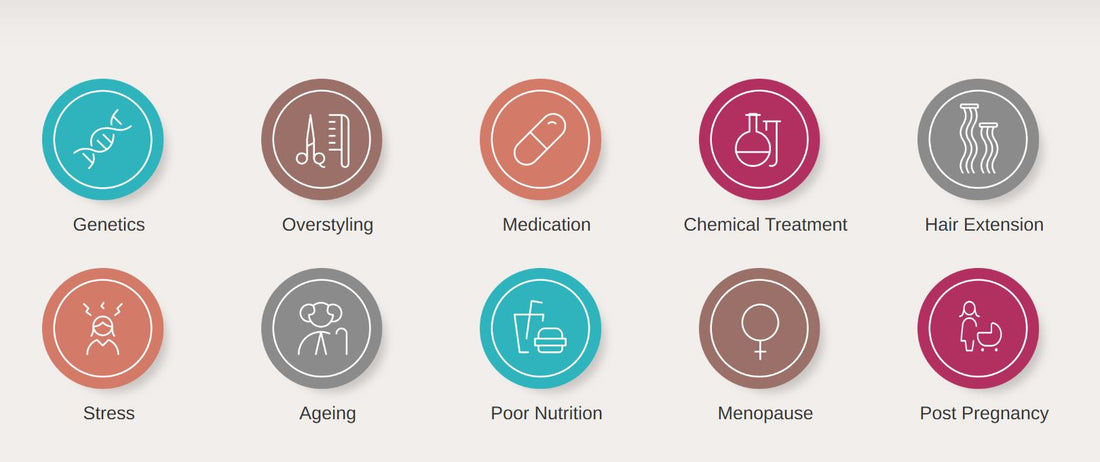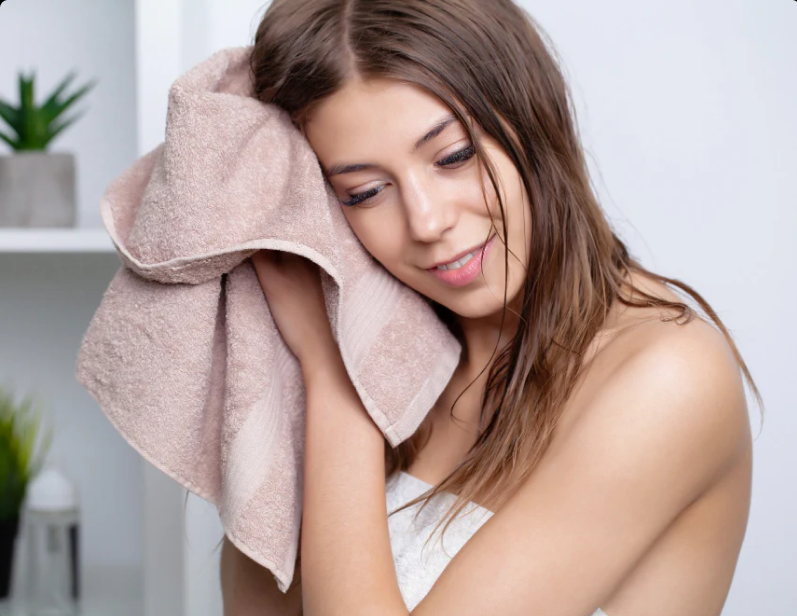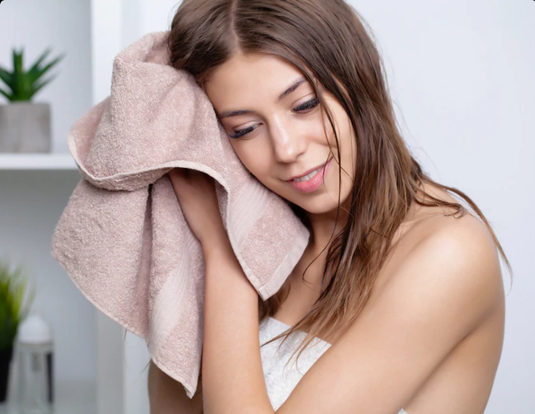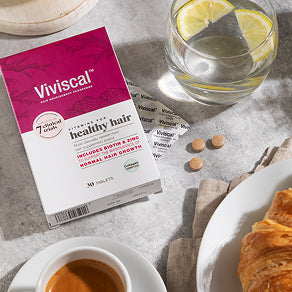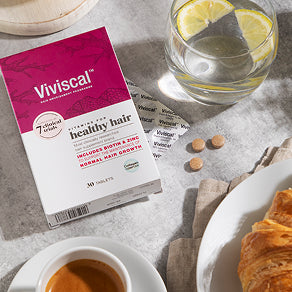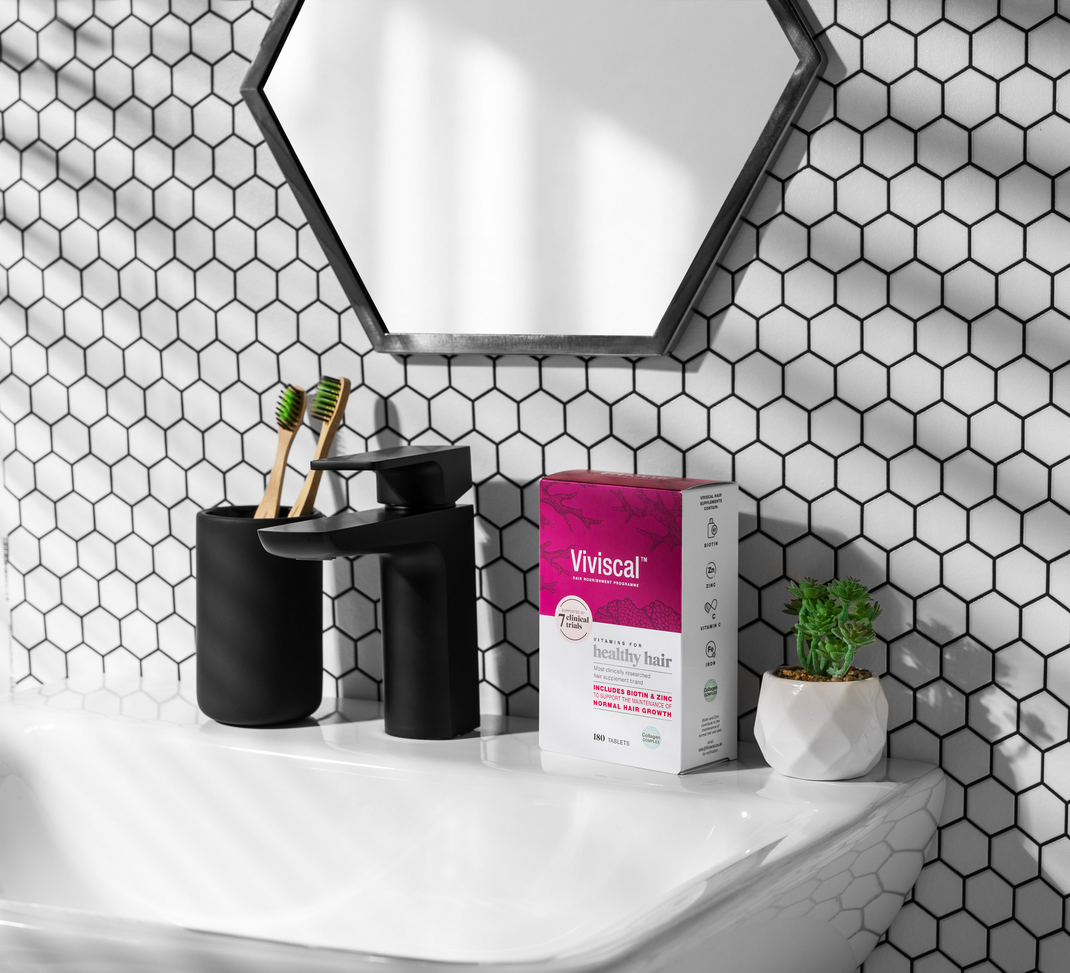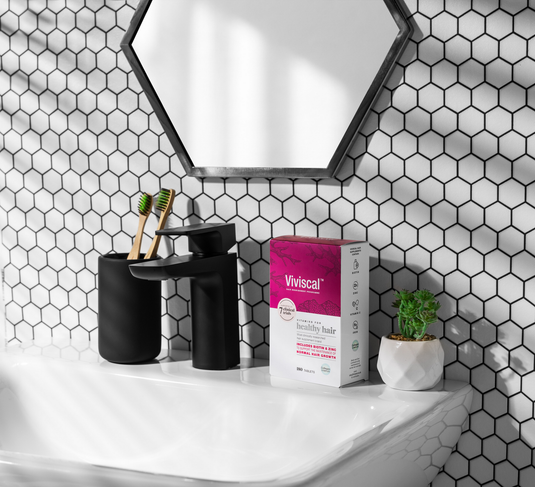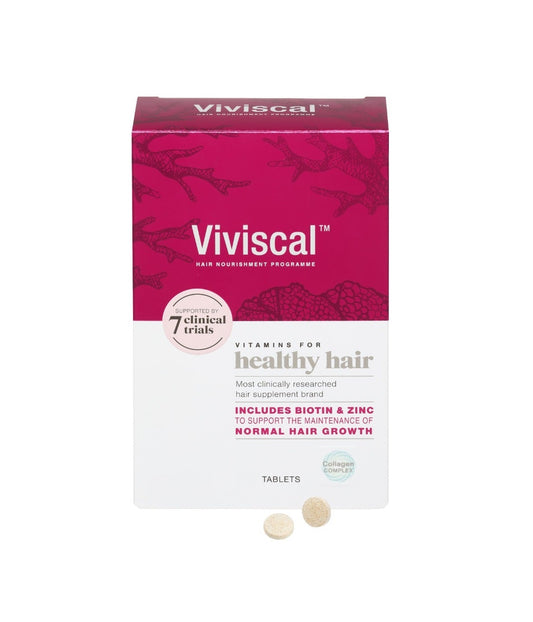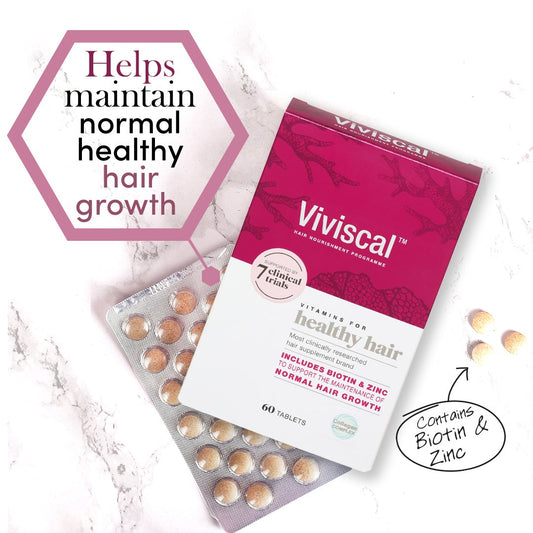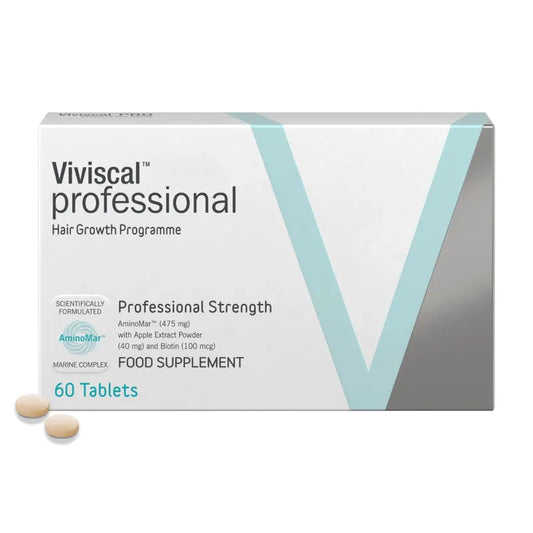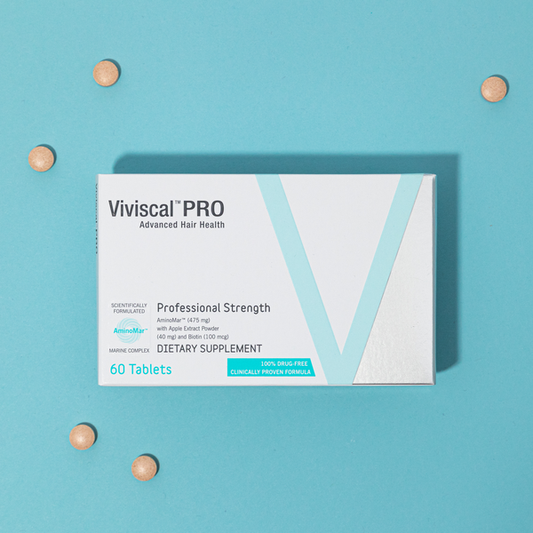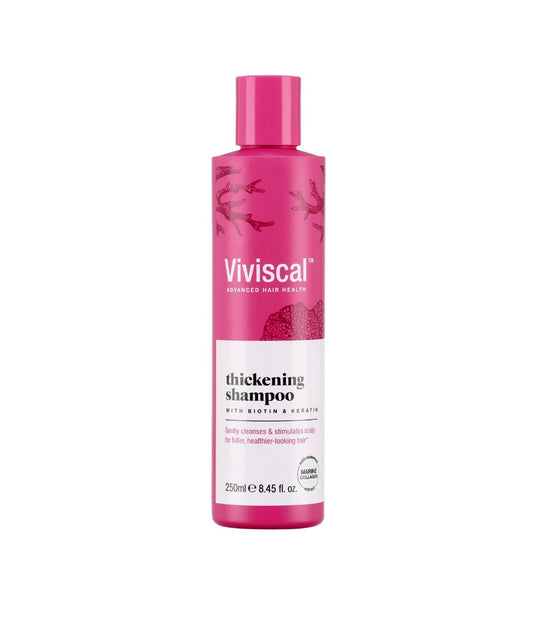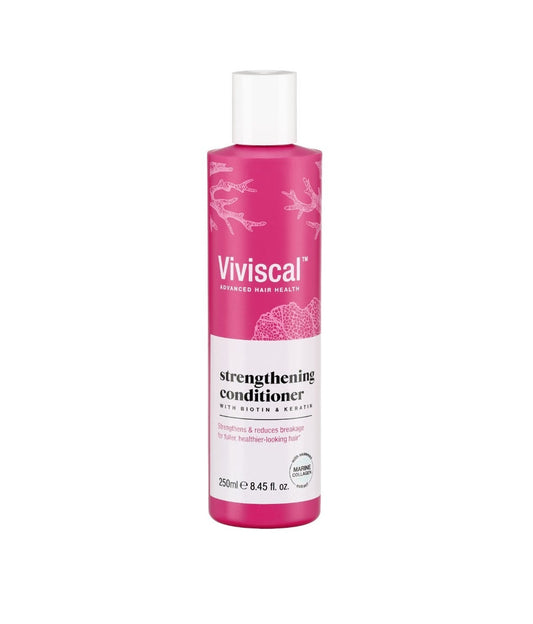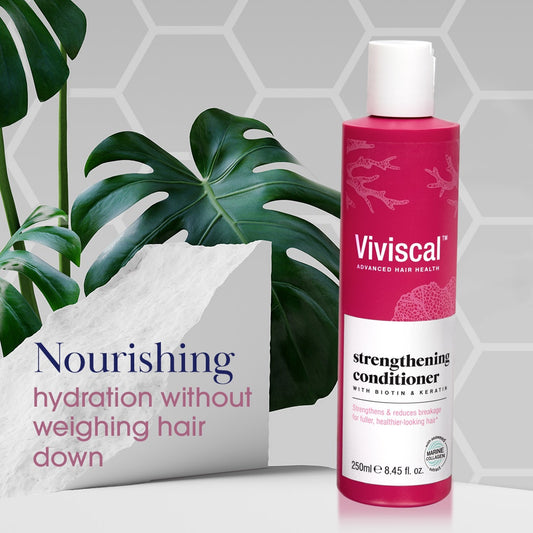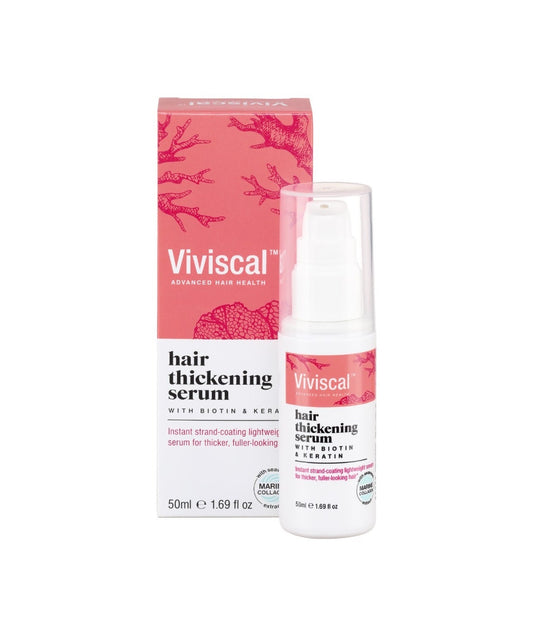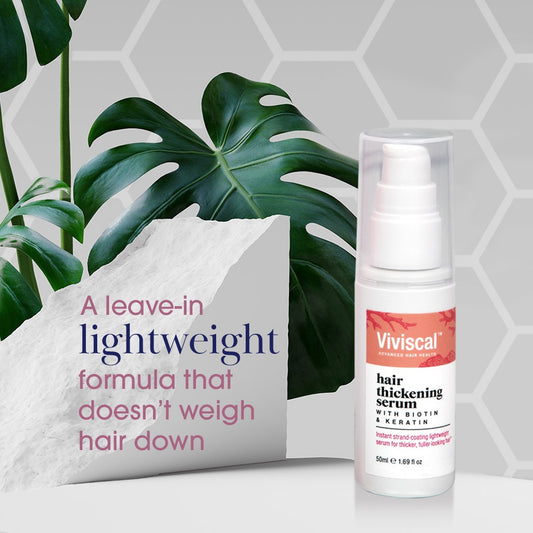What Are the Causes of Hair Loss in Women?
According to a dermatological study, 40% of women have visible signs of female pattern hair loss (FPHL) by the time they turn 50. But why? What causes excessive shedding and hair loss in so many women?
There are an overwhelming number of possible reasons for hair loss in women, from pregnancy or menopause to hormones or diet deficiencies. And that’s without even considering stress levels, genetics and medical conditions.
So, to break it down for you, the team at Viviscal has compiled a list of common causes of hair loss in women. Read on to get started.
Stress
Many women with hair loss find there's a link between shedding and their stress levels. In fact, stress is one of the fundamental triggers for hair loss in all people.
Stress has numerous negative effects on the body, such as insomnia, headaches and heartburn, as well as hair loss. When the body experiences prolonged periods of stress (referred to as ‘chronic stress’), its hormone levels become unregulated.
But if the stress is ongoing (also known as 'chronic'), we might have an excess of stress hormones circulating throughout our body. This can have a negative effect on your body – and it can also cause hair loss.
As a result of this hormone release, the natural hair follicle cycle can encounter a phase of dysregulation in which the anagen (or ‘growth’) phase terminates early and the telogen (‘rest’) phase is drawn out for longer. Due to this, less hair is produced and more sheds.
Illnesses
A number of medical conditions can be responsible for hair loss in women. The most well-known is alopecia areata. This is an autoimmune condition that causes patches of hair (or, in some cases, all your hair) to fall out. In the most severe cases, hair loss caused by alopecia is permanent.
Unfortunately, there is no cure for this disease, but there are treatments and ways to cover up hair loss. Diseases such as lupus and cancer (specifically Hodgkin lymphoma, and also due to the effects of chemotherapy) as well as thyroid problems, eating disorders, polycystic ovarian syndrome and trichotillomania can also cause hair loss.
Genetic
For some women, hair loss may be down to a genetic fault. Androgenetic alopecia (or AGA) is an inherited condition that directly affects the anagen phase of hair growth. This condition reduces the amount of time that hair grows, eventually leading to more hair falling out – or ‘shedding’ – rather than growing. Most commonly, areas on the top of the head (such as the parting and temples) will be affected here.
Deficiencies
Another common reason for hair loss in women is deficiencies and diet. To grow and pass through its normal cycles, hair needs nourishment just as much as humans do. This ‘food’ comes in the form of nutrients and minerals that are absorbed into the root of the hair follicles from the bloodstream.
For hair follicles to be ‘fed’ and produce healthy hair, the following nutrients are needed in the correct balance:
- Vitamin A
- Vitamin C
- Vitamin B7 (or biotin)
- Vitamin D
- Iron
- Zinc
Not having enough of one – or too much of another – can cause irregularities in hair growth and, in some severe cases, hair loss. For example, a zinc deficiency has been connected by medical studies to alopecia.
Luckily, this type of hair loss is perhaps the easiest to counteract, especially with the help of Viviscal’s hair growth supplements for women. By taking an oral supplement every day, you can replenish the natural vitamin and mineral stores in your body to reduce the likelihood of deficiency-related hair loss.
Over-styling (traction alopecia)
Another potential cause of hair loss in women is over-styling. Few women take this into account, but something as habitual as styling your hair could cause damage.
Styling your hair every day in tight, slicked-back styles can cause traction alopecia. This is where your hairline gradually recedes in line with the tightness of the hair being pulled back. Usually, this occurs when hairstyles such as cornrows, extensions, ponytails, tight buns and braids are worn excessively.
Early on, little bumps on the scalp may appear like pimples. Then, as the condition worsens, hair breakage can occur (most specifically on the front and sides of the scalp where the widow's peak is). This form of hair loss is quite often reversible by holding off on styling for a few weeks. Using nourishing shampoos and conditioners can also help restore over-styled hair to its former glory.
Menstruation
The menstrual cycle can also affect hair loss.
Although this form of hair loss is not as serious or as permanent as the others, it may provide you with the explanation you’ve been looking for. When menstruating, oestrogen levels fall suddenly, which may cause the hair to enter the ‘shedding’ phase quicker than it would have otherwise – this is known as ‘telogen effluvium’ (or TE). Don’t worry, the hair will grow back.
Alongside hair loss during menstruation, hair also becomes oilier due to the body’s increase in progesterone and testosterone, causing sebum production to elevate.
Pregnancy (postpartum hair loss)
Another hormonal-related cause of hair loss is pregnancy. For many women, pregnancy causes a surge in growth and strength, with many mothers-to-be experiencing a peak in hair health while pregnant.
However, after birth, oestrogen levels fall dramatically and, as with menstruation, this can cause the hair follicles to enter their ‘resting’ phase sooner, reducing the rate that new hair grows. This is known as postpartum alopecia and is usually remedied after 6-12 months of giving birth.
Treat your hair loss today
If you’re a woman struggling with hair loss, including thinning or shedding hair, get in contact with Viviscal to find out how we can help.
Our bespoke hair growth vitamins for women are the most clinically researched on the market, while our shampoo and conditioner act as excellent supplements to nourish thinning, damaged hair from the outside.
Use a Volumizing Shampoo & Lightweight Conditioner
How do I get more volume in my thin, fine hair? We get this question a lot at Vivisical™! Many women, especially those over 40, struggle with thinning hair and lack of volume. But don’t worry – we’ve got you covered with expert tips and tricks to add volume to thin hair. Whether you’re dealing with age-related hair thinning or naturally fine strands (or both!), these tips will help you achieve fuller-looking, more voluminous locks.
Understanding Thin Hair
Before diving into solutions, let’s address why some of us have fine or thin hair:
Genetics – Your DNA largely determines your hair type. If you have a parent with thin hair, you’re much more likely to have thin hair yourself.
Aging – Nearly everyone experiences some hair loss with age. Plus, hair follicles can shrink with age, leading to finer hair.
Hormonal changes – Pregnancy, menopause, and thyroid issues can affect hair thickness.
Nutritional deficiencies – Lack of certain vitamins and minerals can impact hair health.
Stress – High stress levels can lead to temporary thinning.
Thin hair presents unique styling challenges, like:
- Lack of body and bounce
- Difficulty holding styles
- Appearing flat, especially at the roots
- Becoming greasy more quickly
But don’t despair! You can transform the appearance of thin or fine hair with the proper techniques and products.
15 Secrets to Add Volume to Fine & Thin Hair
Before diving into solutions, let’s address why some of us have fine or thin hair:
1. Use a Volumizing Shampoo & Lightweight Conditioner
How do I get more volume in my thin, fine hair? We get this question a lot at Vivisical™! Many women, especially those over 40, struggle with thinning hair and lack of volume. But don’t worry – we’ve got you covered with expert tips and tricks to add volume to thin hair. Whether you’re dealing with age-related hair thinning or naturally fine strands (or both!), these tips will help you achieve fuller-looking, more voluminous locks.
2. Skip the Towel
When drying freshly washed hair, a regular cotton terry towel can rough up the cuticle and cause breakage to fragile, wet hair. Instead, gently wrap hair in an old T-shirt or a bamboo hair wrap designed to absorb moisture without damaging it.
3. Choose a Thickening Serum
After you’ve washed your hair, apply a lightweight leave-in product like Vivisical™ Hair Thickening Serum. Vivisical™ Hair Thickening Serum coats each strand to reduce frizz, leading to thicker, fuller-looking hair^^. Whether you air dry or blow dry your hair, this is a great addition to your routine.
^^Use in conjunction with Vivisical™ Thickening Shampoo and Strengthening Conditioner
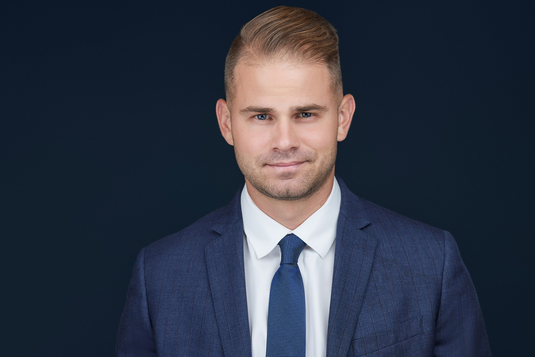
Vivisical™ has been researched, and in just one of the many studies, the people who took this supplement had more hair after taking it three months, and less hair shedding.
-Dr. Brian Heil, Doctor of Trichology
Frequently Asked Questions
How do I get more volume in my thin, fine hair?
To add volume to thin, fine hair, start with a volumizing shampoo and conditioner. Use styling products like mousse or root-lifting spray on damp hair, then blow-dry hair upside down for maximum lift. Finish with a texturizing spray or dry shampoo to add body and grip to your style.
How can I make my thin hair look thicker?
To make thin hair appear thicker, opt for a cut with long layers that create movement without losing much fullness. Use thickening products that coat the hair shaft, and consider strategic coloring techniques like highlights and lowlights to add depth and dimension. Styling hair with textures such as waves or curls can also make hair look thicker than sleek, straight styles.
How do I get more volume in my thin, fine hair?
To combat flat hair on top, apply a volumizing root spray to damp roots before blow-drying. Use the “twist and clip” method: twist sections of damp hair, clip them to your head, and let them dry for added lift. Additionally, try changing your part or using a zigzag part to create instant volume at the crown.
